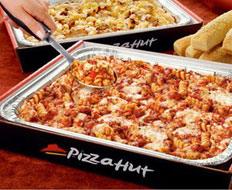Wendy’s tries to become a kids’ place. Pizza Hut adds salad and pasta. Everybody changes their look, and now Burger King hangs up the High King.
Why do we make these kind of sweeping changes in our brands?
Well, sure, we do it to increase our market share by causing more visits from existing customers, new visits from noncustomers, and increased buying from everyone. But there are other reasons as well.
Let’s start with new products. Probably the most famous, risky, and huge change is a quick serve open for lunch and dinner adding breakfast. Just think about it.
A whole new menu, new store hours, new cooking procedures, more crew and management, more cleanliness and litter problems, and on and on. But it adds a whole new business and image, and today, that same quick serve is trying to become a free WiFi coffee house.
So far, it seems to be working, but the effect on family business is for the future to see and, of course, the investment the operators need to make.
Sometimes we change to modernize. In the early ’70s, McDonald’s decided to improve from what some thought was a garish red-and-white-tile building to the brown brick restaurant. This was rather sacrilegious at the time, and also quite expensive. But it opened whole new markets as heat and air conditioning became possible and the company obtained a much classier image.
Then there are politically correct reasons to change. Think of poor old Sambo’s. They named themselves after a children’s story only to run into a huge political backlash. Time for a new name, or we have to change to get rid of a bad image.
Early in McDonald’s history, the chain began to become a hang out for teens. It became so bad that they were changing transmissions in the parking lots. Enter: Ronald McDonald, and it became a family restaurant.
One interesting strategy for brand change is borrowed from the real estate business. If a house doesn’t sell quickly, it is taken off the market for a while and then reintroduced with fanfare. Some quick serves have done this, too, sort of dropping out for a short time and then holding a grand introduction like they are brand new.
Sometimes brands are just undefined or ill defined. A change has to be made to clarify what the brand stands for in the consumer’s mind. It’s the problem of all things to all people, or nothing to anyone.
One of the worst reasons to change is the dreaded “I’m tired of it.”
McDonald’s dropped “You Deserve a Break Today,” not because it stopped working—in fact it was at its peak—but because the operators were tired of it. And that was after only about five years.
Be especially careful of this one.
Other reasons for change include your not being able to fulfill the promise being made to the consumer. Unrealistic service times, too many menu items, operators not making a profit on value menus, and being unable to find the crew to work 24 hours are just some examples.
Or legally you are just too close to someone else’s brand. Or you need to emphasize some aspect of your brand that will set you apart from your competition, like service or value. Or it’s just not working.
If I can give you some advice, beware of some convoluted thinking that has and continues to go on in the business. Sometimes it is because of outside influence, but sometimes we do it to ourselves. We change our brand when maybe we should have left well enough alone.
There was a large chain years ago, owned by a massive food company, who decided to change completely. To do so, they brought in management from one of their divisions that sold packaged desserts. Not one of them had any quick-serve experience. It went out of business almost immediately.
Another chain decided that value meant high prices, because how could a 15-cent hamburger be any good? They equated quality with high price. It only lasted a few days.
Speaking of management, be wary of consultants wanting to change your brand. Don’t forget, that’s their job. Why would they walk in and tell you everything is peachy?
Then there’s the infamous “Wunderkind.” I once had a 25-year-old MBA walk into my office and announce he was there to evaluate the creative procedures for my company. I asked him to describe what was in a Big Mac. When he got to the tomato, I knew I was in trouble.
Watch out for short-term thinking. I know you can’t predict the future, just look at Wall Street. But, do your best when someone wants to change you. It might look good now, but life sure changes quickly and you don’t want to be caught deeply mired in kale salad when the world decides it wants kielbasa.
And don’t do something just because of the stock price. I repeat, look at Wall Street.
On the external side, there are governments and special interest groups that want to change you, just to name two.
California took away toys from little kids, and there are lots of people out there who want you to sell only fruits and vegetables, or only certain ones at that. Just think it through before you cancel your beef order.
Back to Burger King for just a minute.
A couple of years ago I was talking to one of their marketing executives. He asked me about the King. I said I thought he was scary. He agreed. Said his little daughter was terrified of the guy. Maybe they finally got around to making the change they should have made a long time ago.
All I ask is that you really “study on it,” as my dad would say, before you make a brand change.
A Peaceful Life, Happy Trails, and have a great Turkey Day and truly be thankful for what you don’t have.





